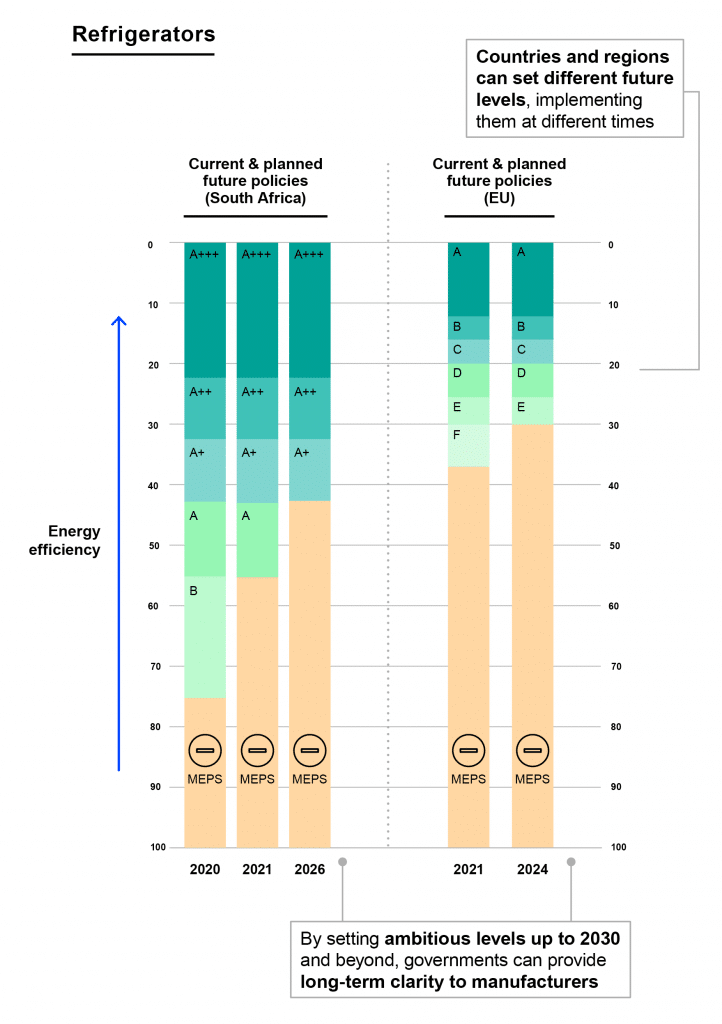Residential refrigerators and fridge-freezers
Electricity consumption by household appliances continues to increase, reaching over 3 000 TWh in 2019 and accounting for 15% of global final electricity demand, or one-quarter of electricity used in buildings. Refrigerators represent a meaningful share of the overall electricity consumption in appliances. In overall, energy performance improvements have enabled the number and size of refrigerators to grow without significantly increasing overall national refrigerator electricity consumption, and in some cases, helped decrease overall electricity consumption. Without these energy efficiency improvements, energy consumption from refrigerators and fridge-freezers would have been three times higher in some markets.
In a hypothetical scenario in which new the efficiency of new residential refrigerators and fridge-freezerssold globally doubled from 2022 onwards, the potential global annual electricity reduction in 2030 could avoid up to 230 TWh resulting in 100 million tonnes CO2 emissions reductions. Under the same scenario, SEAD country members could avoid 140 TWh, resulting in 65 MtCO2 less emissions in the same year.
Current policy coverage in standards and labels
Policy coverage with minimum energy performance standards (MEPS) and comparative labels for refrigerators and freezers has remained stable in recent years. Currently, 76 countries have such policies in place, covering over 80% of global space cooling energy consumption, up from two thirds in 2010. New mandatory MEPS and labelling policies for refrigerators are currently under development in seven additional countries.
As the technology keeps evolving, there have been major updates of performance requirements and labels in the European Union in April 2021. New refrigerators now have to be 75% more efficient than 10 years ago, while labels have been rescaled to allow consumers to identify top performing products more easily.
The Energy Performance Ladder
In order to create large and growing markets for efficient appliances, the SEAD Initiative developed the Energy Performance Ladder that brings together multiple policies under a single consistent set of performance thresholds. These Ladder ‘steps’ are defined as energy performance levels using a standard test procedure. Governments can then set policy thresholds (such as MEPS, labels and high energy performance standards or HEPS) at different steps, as well as years in which the thresholds will move up the ladder.
The Ladder then provides a framework that can:
- Show a clear trajectory for improving appliance energy performance over time, by defining how policy will move up the ladder in future
- Benchmark energy performance across markets, while allowing policy to be set that is suitable for local market condition
- Aggregate markets to reduce costs and make highly efficient products more widely available.
An illustration of the Energy Performance Ladder with current and planned MEPS levels for residential refrigerators is depicted below. Current and planned future MEPS for 2020, 2021 and 2026 in EU and South Africa are illustrated demonstrating the increase in energy efficiency demands over time.

